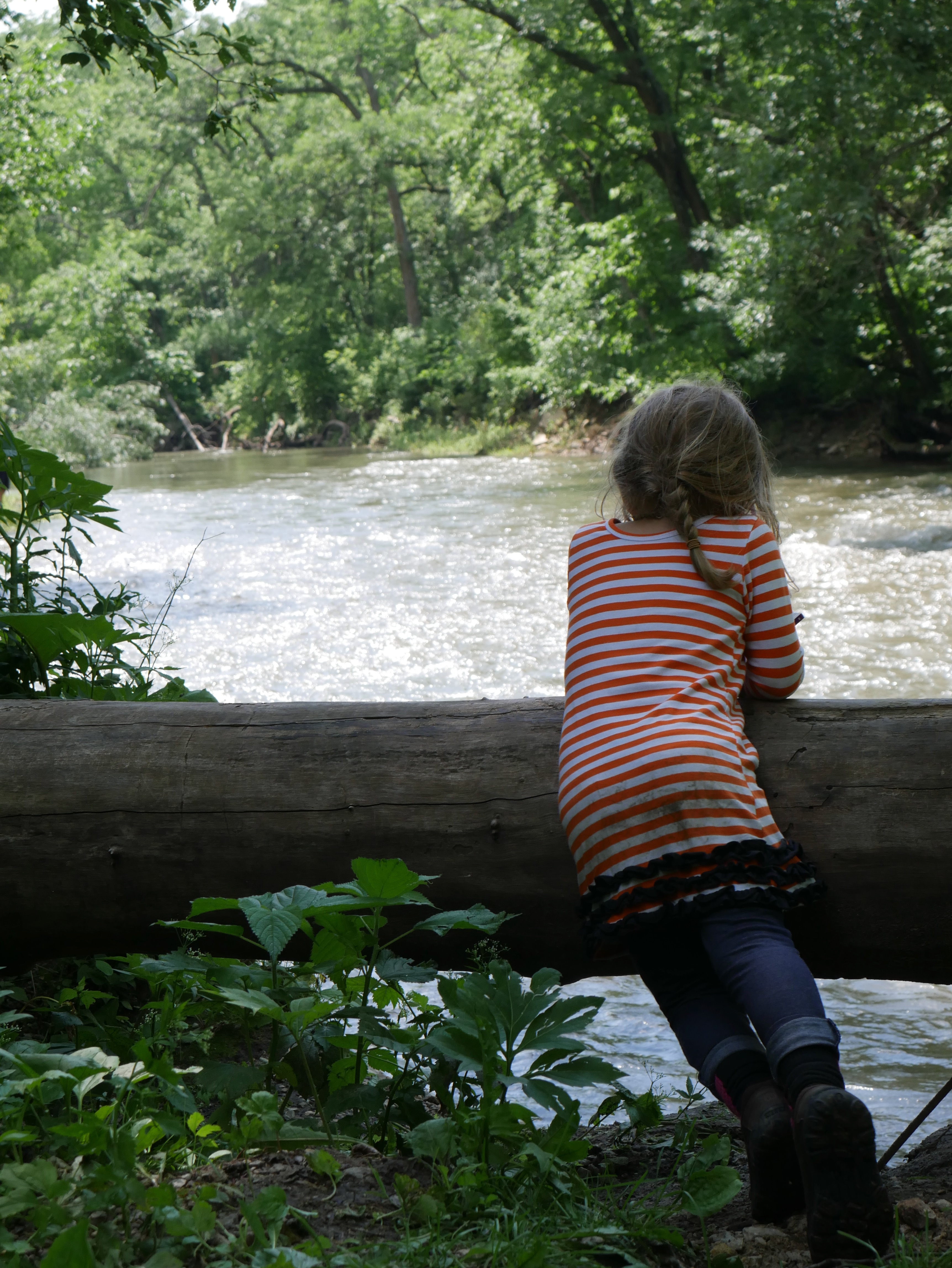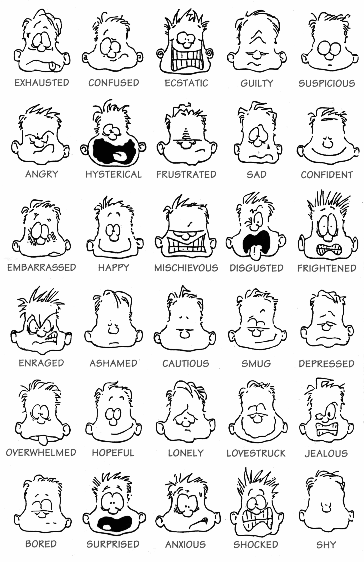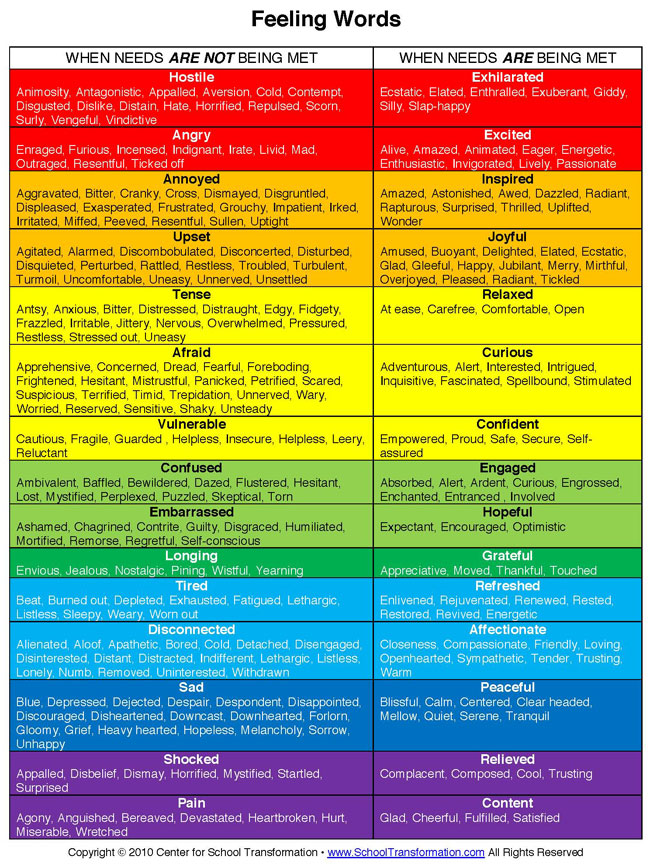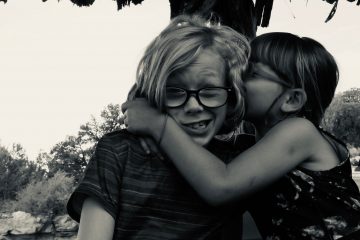Mindfulness for Kids
Published by Sally Palmer on
Mindfulness For Kids (and Their Grownups)
**We listen to Stephen Halpern’s album “Tonal Alchemy” almost every night in order to fall asleep – I find that my kids go to sleep quickly and seem to feel well rested in the morning. If ambient sounds and singing bowls aren’t your thing, I’ve included suggestions for guided mediation albums at the end of the post.**
Even if you aren’t familiar with mindfulness or don’t practice it yourself, it’s a great tool for kids (even really young kids). As you incorporate some of these ideas into your day with the intention of helping your children, you will unintentionally internalize and incorporate mindfulness principles for yourself; think of it as a bonus. Before we talk about specific tools for building body awareness and mindfulness in your kiddos, let’s define some words first. Mindfulness is a term that has become increasingly popular in mainstream psychology, yoga classes and complimentary medicine, but what is it? What does it mean? Is it even possible to be mindful? According to the Dictionary, mindfulness (noun) is:
1. the quality or state of being conscious or aware of something
2. a mental state achieved by focusing one’s awareness on the present moment, while calmly acknowledging and accepting one’s feelings, thoughts, and bodily sensations; used as a therapeutic technique.
The popularity of mindfulness has its roots in the work of Jon Kabat Zinn, who studied under Thích Nhất Hạnh, Philip Kapleau and Seungsahn. As you probably gleaned from the definition, mindfulness is a calm exercise that allows you to acknowledge and accept your feelings. This doesn’t mean that you shouldn’t feel anger, sadness, happiness or fear; rather, you delve into them and accept them for what they are: an expression of your humanity. I find that the most challenging aspect of mindfulness isn’t recognizing emotions, but being present. Before you can properly engage in your your life (outside of work), you need to disengage your brain from your job, past conversations, your to-do list and all of the myriad thoughts that try to overwhelm your consciousness. If you are staring at your cell phone, you are not mentally present in your moment. The point of mindfulness is to recognize the beauty in the mundane and the everyday – you are surrounded by possibilities and humanity. So, turn off your electronics, remove yourself from the overabundance of information online and notice your life.
On the surface, it seems rather daunting to try and teach energetic, bouncing children how to slow down and calm their minds, but I assure you that it can be done. Setting boundaries and time limits for electronics and screen time will help, as will getting outside or playing to release excess energy. All kids really want safe boundaries and the ability to self regulate and self soothe, particularly in moments of stress. Giving them the gift of mindfulness and meditation will enable them to mentally disengage and move forward in their day with more resilience and agency. In fact, since we’ve started practicing mindfulness and intention setting in the morning, my kids have started reminding me to set my own intention for the day.

** Breathing **
Before you set your intention for the day, you need to know how to breathe. I know, you unconsciously do this every day and you already know how to breathe, thank you very much. Except…do you? Take a moment right now and notice how you’re breathing. Is it coming from you lungs? Your belly? Are you breathing with your mouth or your nose? Is your brow furrowed as you read these words? How about your posture? We’ve also lost sense of our core (gravity point) and have no idea what posture is supposed to look like. Are you shoulders raised? Are you sitting up? Slouching? Standing? Even if you’ve learned how to breathe and sit in a yoga class, you probably don’t mindfully breathe with every inhale and exhale, or sit correctly – it’s exhausting to even think about. So for right now, in this very moment, focus on your breath. Plant your feet into the floor; feel the earth. Pretend like a string is pulling you up to the sky through your spine and relax your shoulders; you can sit in a yogic position, at the end of a chair, or simply stand. Sometimes closing your eyes can be helpful, as can putting your hand on your belly. If your belly rises with each inhale and exhale, you are belly breathing. If you feel your chest rising, focus and try again. Once you feel the difference between belly breathing and lung breathing, you’re going to try some different breathing techniques.
4×4 Breathing
Breathe in through your nose to the count of four
Breathe out through your *mouth to the count of four
* When you breathe out of your mouth, purse your lips like you are blowing bubbles, so you feel your breath.
3×6 or 5×10 Breathing*
Breathe in through your nose to the count of 3 or 5
Breathe out through your nose to the count of 6 or 10
* Depending on your lung capacity and ability to regulate breathing, you will either inhale for 3 seconds and exhale for 6 seconds, or inhale for 5 seconds and exhale for 10 seconds; the point is to elongate your exhale.
Now that you’ve practiced these two types of breathing, think about how you feel. Are you calmer or less anxious? If so, then you know how to mindfully breathe, calm your nervous system and can teach this technique to your kids. I’ve purposefully demonstrated these two types of breathing because I think that they can be used in different situations for different purposes. The first breathing technique is really good at bringing someone down from extreme fight or flight (a child having a meltdown; a very painful injury; the inability to speak coherently because of pain, fear or being overwhelmed, etc). Once you get yourself or your child to regulate their breathing, then you can suggest the second breathing pattern with the elongated exhale. Physically, this type of breathing engages the vagus nerve, promoting “rest and digest” (also known as the parasympathetic nervous system). Some kids can go right into the second breathing pattern, particularly if they are just starting their day with an intention. In my experience, though, I need to utilize both types of breathing to help my kids reach their calm and resourced selves.
** Setting an Intention **
What does it mean to set an intention? Very simply, it means to think of a positive statement or affirmation as to how you want your day to go. When you set an intention, you can use it to guide your mind and body when you encounter a stressful moment or situation. For example, if you set an intention to nourish your body, you will keep that in the back of your mind as you go through your busy day. Intention-setting raises body awareness, so you might be more aware of hunger or overstimulation and react accordingly (by reinforcing the intention you set for the day). Here are some examples:
I will have a peaceful day
I will give my body love.
I will advocate for myself at work.
Math class will not be stressful.
My anxiety will not control me.
I will give my body food, water, laughter, love, friendship and creativity.
Before you set your intention for the day, plant your feet with your spine gently elongated, breathe deeply (use the 4×4 or 3×6 breathing you have learned), and turn inwards to figure out what your body needs. Your intention might be the same every day, or it might change – there is no right or wrong answer. Your intention is all about YOU and is a very simple way to give yourself love and support. When your child is at school, daycare or away from you, setting an intention can help them overcome difficult situations or obstacles on their own. If they are aware of their body and practice turning inwards, they will be less likely to engage in bullying and will be able to advocate for themselves.
** Body Awareness & Feelings **
In order to “calmly acknowledge one’s feelings,” you have to recognize the feelings that you’re experiencing. As I’ve mentioned in previous posts, the internalization of toxic masculinity can cause an inability to recognize feelings. If you were raised to “stop crying” or “man up,” you haven’t been taught to understand or name your feelings; you’ve been taught repression. When you engage in emotional repression, you create a little box in your body where you stuff your emotions until the box becomes so full that you explode. Instead, if you are able to put a name to a feeling, you take away some of its power over you and enter into a negotiable state.
You can’t negotiate your feelings away, but you can take a little step outside of your pulsating body and see how the emotion is affecting your mind, body and soul. Anger is generally the strongest feeling and can be seen very easily in others – their body tenses up, their hands become fists, their breathing gets faster, blood rushes to their face, their pupils change size, etc. Fear can be seen just as strongly, but presents itself as someone turning inwards or running away. Fight or flight is the body’s response to a perceived threat, but the body has a third, less talked about option; paralysis. If you’ve ever been in a situation where you’ve either been the victim or watched something happen to another person and you haven’t done anything at all, you’ve experienced paralysis. It is probably the most destructive reaction emotionally, because you feel absolutely powerless in the situation.
In order to raise general awareness in your child’s body, you can start by naming these feelings when you see them in action. For example, if your child is screaming and flailing, you can say something like, “Wow! That’s a really big feeling. You are really angry right now.” This goes back to my previous blog post about play and how you need to validate your child’s emotions. If you can take a step back from your own emotional response (which can be really hard if you aren’t feeling particularly patient or resourced), naming your child’s feelings will teach them how to identify the feeling.
If you aren’t feeling resourced, your well-meaning statements can turn into anxiety about your child’s lack of awareness or nagging – know where the line is and stop yourself from making awareness-building a negative experience. On that note, I should warn you that this type of body awareness doesn’t happen overnight. If you have a child with Autism or Sensory Processing Disorder, it might take even longer and could require the assistance of an MNRI-trained specialist to teach your child’s body how to navigate in space. It’s well worth the effort, though, as you are giving them a tool that will help them for the rest of their lives.
If you or your child enjoy visual reminders, there are a few charts that you can print off to help them identify how they’re feeling. The chart below is great because the facial expressions are so comical, and you can point out specific manifestations of the emotion. For example, you can say, “look at the angry person’s eyebrow’s and mouth – what do you notice?” Then ask, “Can you make that face? What does that feel like in your body?”
After you name the feeling, have your child notice where they feel the emotion in their body. Do they feel anxiety in their chest? Does anger reside in their shoulders? Where is it being contained or felt? You can then build your child’s coping “toolbox” by asking them how they can make the feeling go away or get the feeling out in a safe manner (crying, yelling, punching a pillow, running, jumping, etc). I find that it’s also helpful to ask your child to think of a time when they felt a particular feeling and have them make a drawing of what that feeling looks like. There are absolutely no rules – so they might just color the whole page red or make an angry person or create an entire scene from memory. All of it is wonderful and allows the child to use art as a way to process their intense emotions.

If you want a chart for yourself or your tween/teen that is color coded, this Feeling Words chart is pretty fantastic. Using words to depict when needs are being met and when they aren’t being met is quite brilliant – you can ask the child to choose the color that corresponds to their feeling (feelings are never black and white, they span an entire spectrum) and then find the word that works for that moment. If their needs are not being met, their emotion will be on the left side of the chart; whereas fulfilled needs are represented on the right.

Another great resource for caretakers is the the acronym H.A.L.T. T.O.T. I have used it with my kids since they were babies as a way to figure out non-verbal frustration. Generally, I would go through the list in my head and decide if one or more of the situations was causing the issue. If you are unfamiliar with what the letters mean, they correspond to specific needs that your child might have that aren’t being addressed (and are causing the behavior you are trying to pinpoint).
This acronym actually works for anyone, not just non or pre-verbal kids – think of how your body and emotions respond when you are simply hungry. Now think of how your child acts whenever you go to the store around 5:00 pm and they haven’t eaten anything; total meltdown, right? We’ve all been that parent in Target or the grocery store with the screaming kid. It’s all part of being a parent in public. If you were aware of the problem, though, you probably wouldn’t feel yourself morph into the screaming parent in Target, you’d just calmly hand your child a free banana or clementine from the bakery area and finish your shopping. That being said, here’s the acronym:
H – Hungry
A – Angry
L – Lonely
T – Tired
T – Thirsty
O – Overwhelmed/Overstimulated
T – Toilet
** Mindful Movement **
Implicit in the practice of mindfulness and meditation is the idea of sitting still. For those of you who have children with ADHD or short attention spans, you’re probably thinking, “Yeah right. There’s no way in hell that my child is going to sit calmly and breathe for any amount of time. Ever.” In that case, if you think that your child would prefer mindful movement over sitting still, there are many ways to incorporate awareness and breath into your day, actively. You could go for a hike in the woods and talk about feelings and breathing techniques – noticing how your breath changes as you walk, run, skip or jump.
Conversely, you could also bring your child to a yoga class in Minneapolis or Saint Paul, or stream a yoga video via Amazon or Gaia. TU Dance offers creative movement classes for kids and there are countless martial arts courses around the metro area (including Capoeira, an amazing martial arts style dance from Brazil). Once you use a more active form of mindfulness or body awareness, you can try to introduce the idea of sitting still and having a quiet moment. I can’t tell you how long it will take for your child to practice mindfulness, or if they’ll ever like it at all. The bottom line is that you need to normalize meditation and mindfulness in order for your child to incorporate it into their daily schedule. If the practice resonates with them, over time, they’ll have a great coping mechanism at their disposal.
We’ve covered a lot of information in one blog post and I want to make it very clear that mindfulness is a practice. Don’t expect it to be easy and don’t be hard on yourself if you struggle with it every day. It will take time to learn how to breathe, engage your core muscles to strengthen your posture and become aware of your feelings (in a calm and peaceful way). Think of learning how to play the piano – it doesn’t happen over night and it’s incredibly challenging, but the end goal is pretty magical. You might have days where you don’t have the energy to be mindful or the thought of teaching your child how to meditate is daunting, and that’s okay. It’s all part of the process. Remember, though, that mindfulness doesn’t have to be a daylong event. Take advantage of time spent in the car or on the bus to breathe deeply and set an intention. If you make it a priority, you and your child’s mindfulness and meditation practice will build slowly, but surely, one breath at a time.
Guided Meditations for Kids (Audio)























